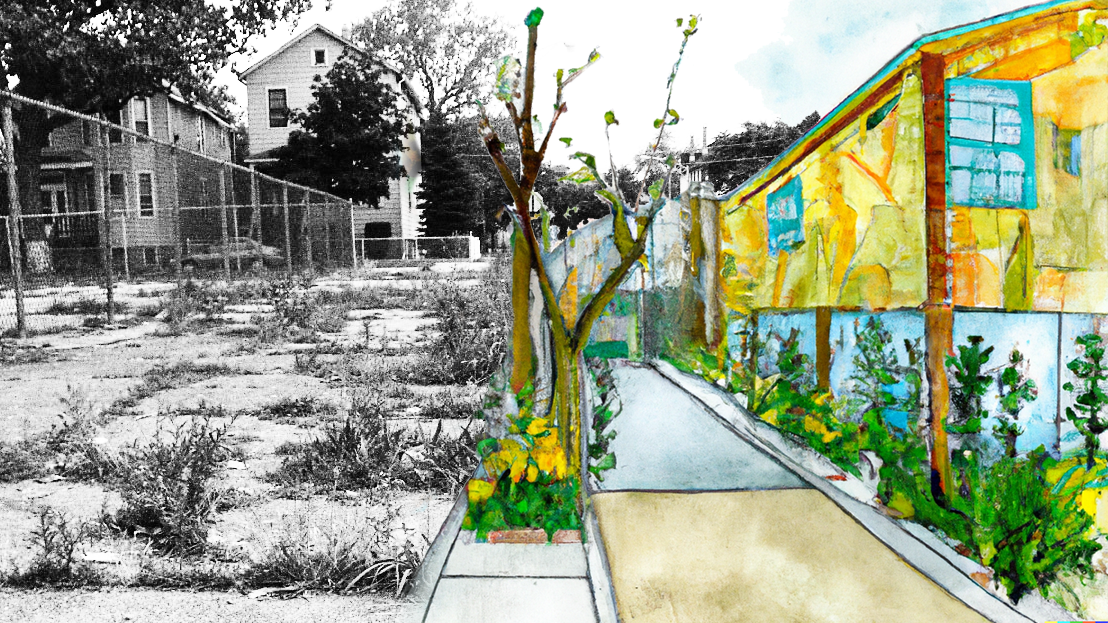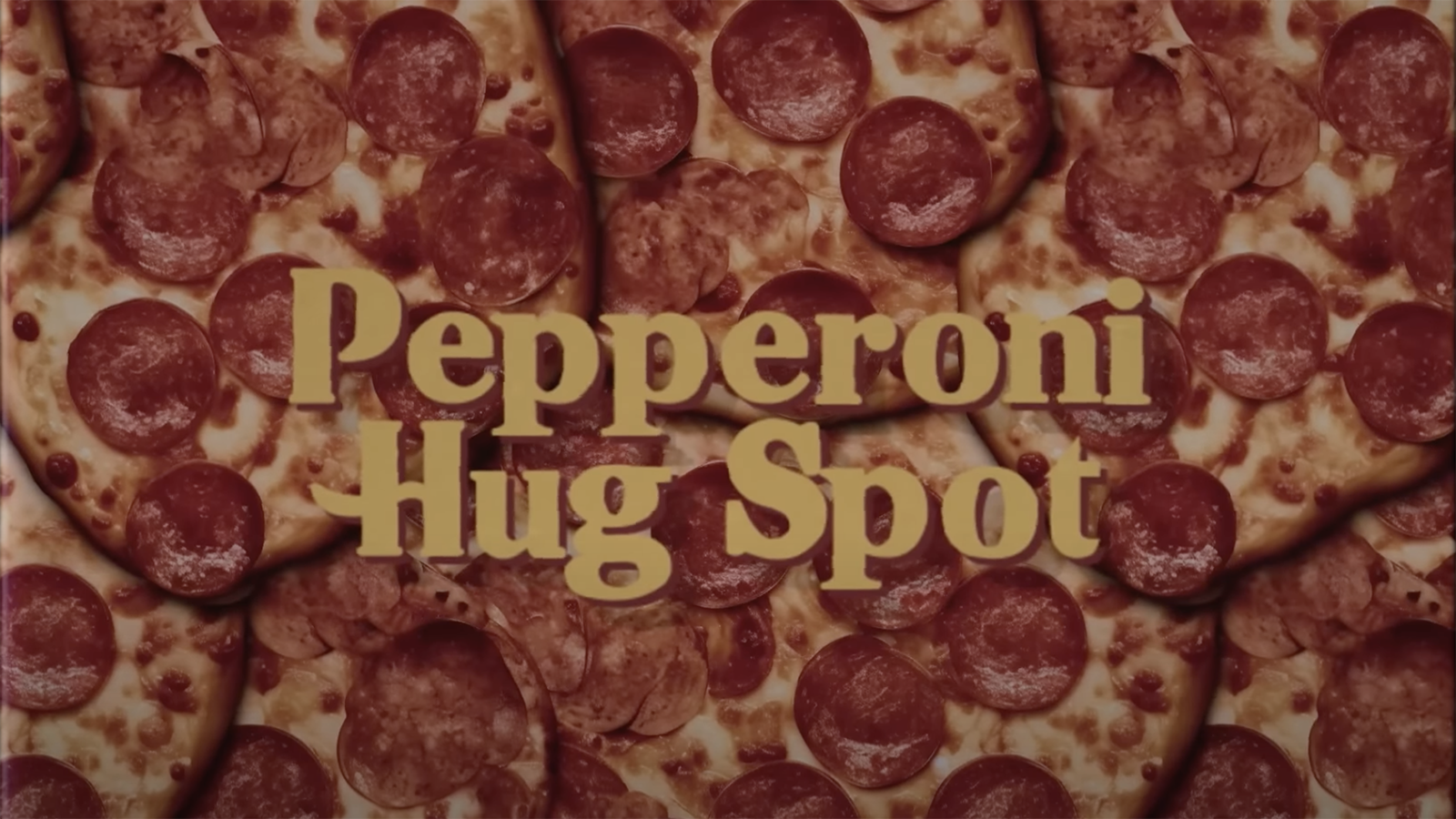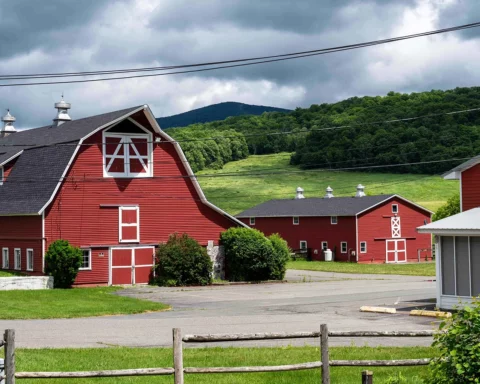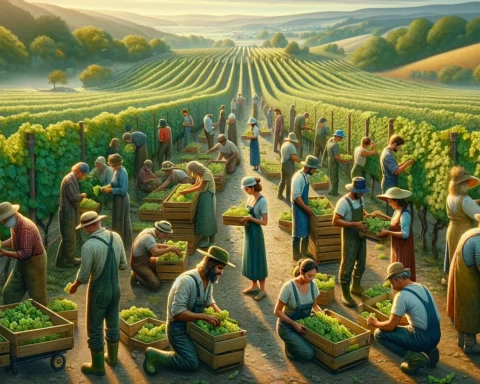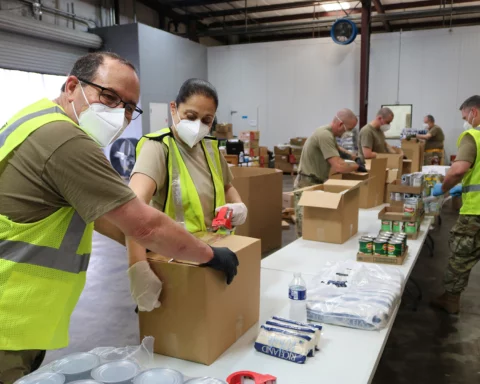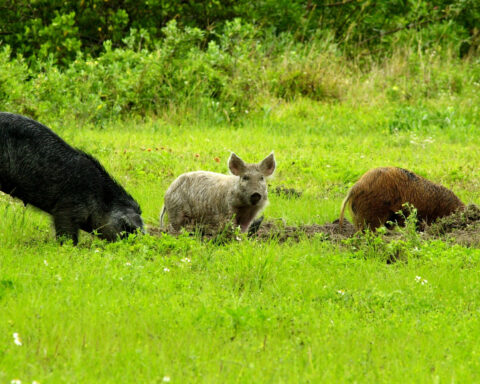Editor’s Note 1: This article is a combination of human-crafted journalism and AI-generated content.
Editor’s Note 2: Purchases made through links on this page may have the happy result of the Greylock Glass receiving a small amount of affiliate program revenue, which helps pay for the content you enjoy.
NORTH ADAMS — Guerrilla gardening, a grassroots movement that seeks to transform neglected urban spaces into vibrant green oases, is about to target North County. The city, as most residents would agree, has no lack of neglected urban spaces. Soon, stealthy bands of agro-activists will unleash this form of creative activism to harnesses the power of gardening to reclaim public areas and foster community engagement.
The Greylock Glass spoke with Emilee Yawn, who will be leading a guerrilla gardening workshop May 13 to share information about this slightly subversive practice at The Plant Connector on Main Street, which she co-owns with her friend Bonnie Marks. Yawn said the idea started with a little cultivated conspiracy among friends.
“My friend Kiefer [Gammell] came to talk to me,” Yawn said, “about the guerrilla gardening idea, doing seed bombs. And I have a background in kind of activism and guerrilla gardening. And so I was like, ‘yeah, we’ve got to do it.'”
This clandestine practice not only beautifies the surroundings but also promotes environmental sustainability and social cohesion. By repurposing vacant lots, abandoned spaces, and neglected corners, guerrilla gardeners are sowing the seeds of change and cultivating a greener future.
Yawn and Marks were already pretty familiar with the social bonds that can be forged through flora.
Yawn recalled opening The Plant Connector, “So my friend Bonnie and I started The Plant Connector a little over three years ago, and we originally thought it was going to be sort of a fake plant store in the middle of COVID — sort of an art project, and we were like, “Oh, come in and see plants! There’s life still happening. And we kind of thought of it as our love letter to North Adams. We often say that a lot about our shop. So we were invited artists to come in and take over half the space.”
What started out as a lighthearted art experiment soon began to attract actual business as well as community.
“And it became real,” Yawn said. “like “This idea of community was really important. I was doing community gardening with Jen [Muñoz] here in North Adams, so I just thought that plant people were really awesome. They definitely tend to have a strong community-based attitude. Gardeners are a lot more open and excited about what everyone’s growing and stuff. So I wanted the whole idea of The Plant Connector to kind of feel like that.
Event
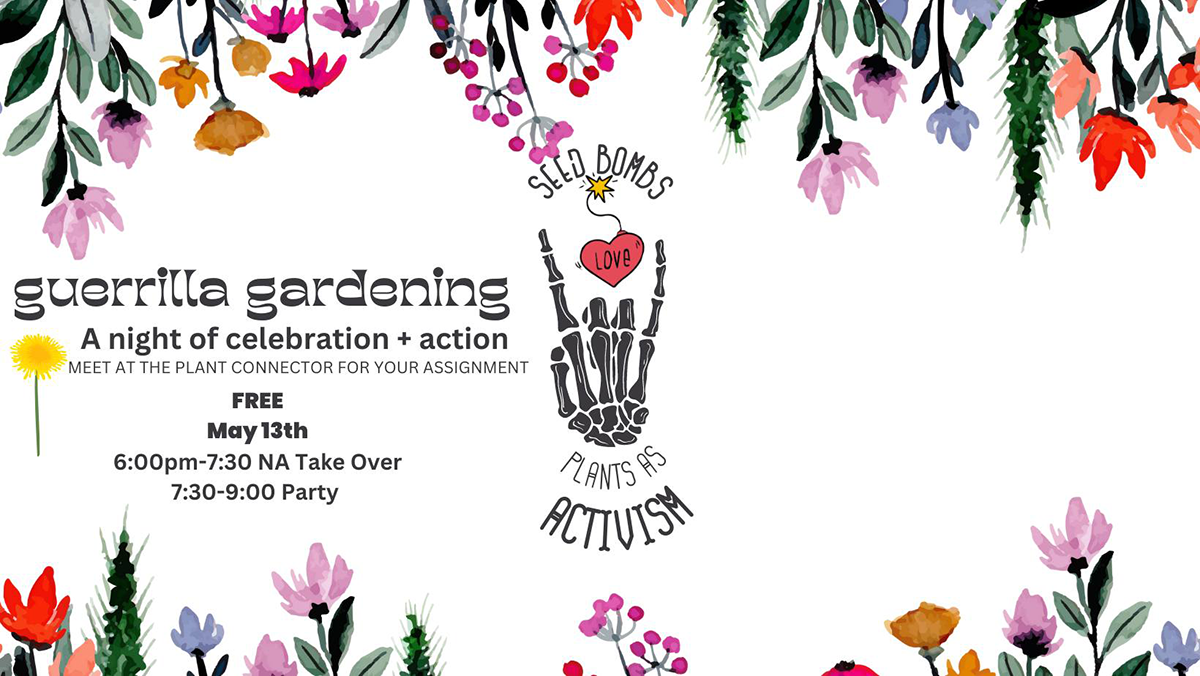
guerrilla gardening: NA take Over
A Night of Celebration and Action
Saturday, May 13, 2023; 6:00 p.m.
The Plant Connector
73 Main Street , North Adams 01247
Join us for a guerrilla gardening event Hosted by Keifer and the Plant Connector! Let’s help the pollinators while beautifying forgotten/ neglected spaces. This is a takeover and a form of activism. We’ll meet up at the plant connector, map out our areas of interest and assign teams to concentrated areas! this is a stealthy operation; we’ll meet back at the plant connector for a little celebration.
The Origins of Guerrilla Gardening
The concept of guerrilla gardening originated in the 1970s in New York City, when Liz Christy and her Green Guerrillas group transformed a vacant lot into a thriving community garden. Inspired by their success, the movement spread across the globe, empowering individuals to take back control of their urban environment. Guerrilla gardeners employ a range of tactics, including seed bombing, which involves dispersing seeds in derelict areas, and “night gardening,” where volunteers covertly tend to neglected spaces under the cover of darkness. These covert acts of cultivation serve as a visual reminder of the importance of nature in our concrete jungles.
Yawn said there was no simple answer to why the concept of guerrilla gardening held such pull for her.
“It’s kind of complicated,” she said. “We have really forgotten how to interact with our built land environments. So I think in rural New England, where we are now, we really appreciate the natural world and we love Greylock. I love to hike and it’s really great to be surrounded by mountains and stuff. But then there’s this idea of this manufactured landscape that happens that isn’t really necessarily thoughtful to native plants, to the animals that inhabit the actual ecosystems. And so I believe there’s such a disconnect that guerrilla gardening is sort of taking this idea that the citizens own the land and are sort of fighting back with this idea that these spaces could be more thoughtfully put to use.”
Yawn suggested that too many developers forget exactly how people use the land on a day-to-day basis, and how humans, animals, including pollinators and other little creatures together creating systems for our what is really an interspecies place for all systems to use.
“Why do certain people,” she mused, “get to decide what is planted and what is not? There are so many abandoned lots that are forgotten about. People that live in the city don’t even come and see these properties ever. And they just they stay here and depreciate. So why not try to create little gardens or places for other things to use rather than just, you know, letting them sit there and go to waste?”
ADVERTISEMENT
Purchase these titles to bulk up your gardening library!
Environmental Benefits
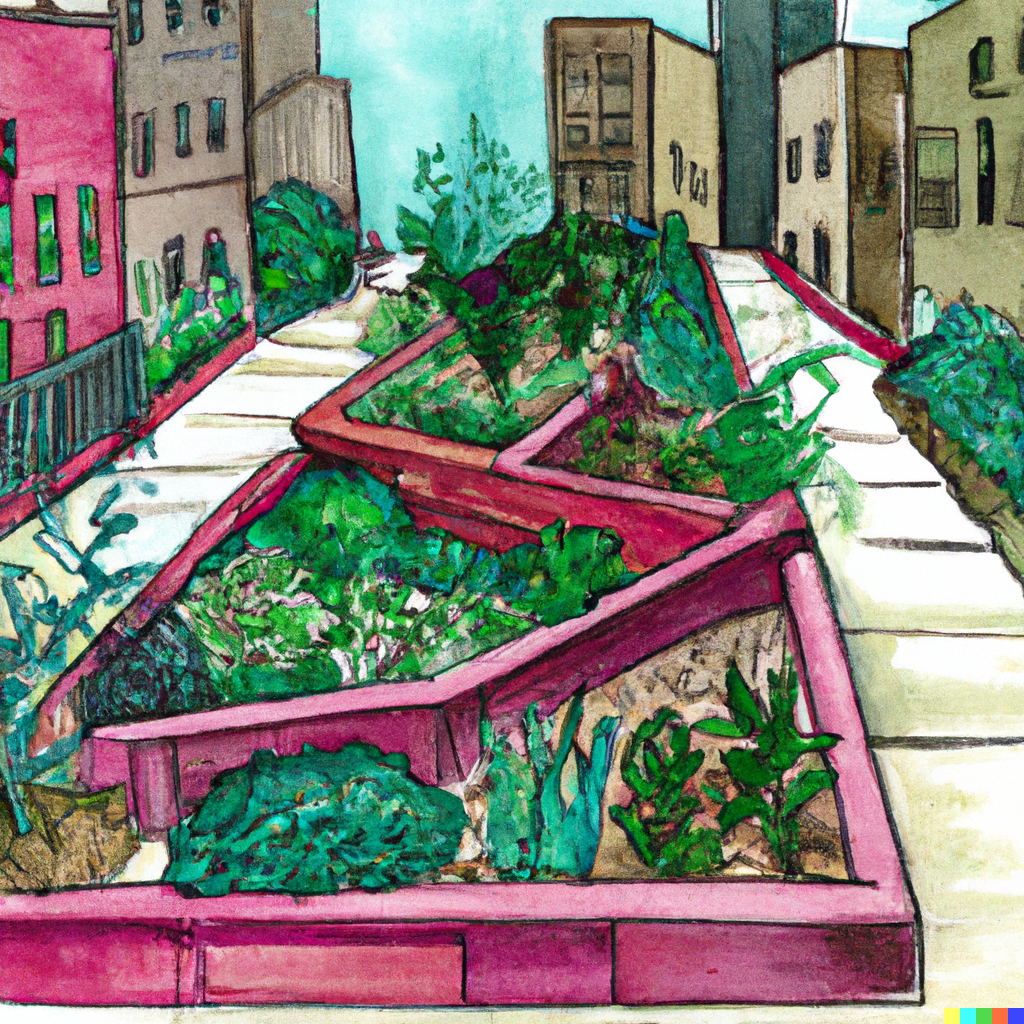
Guerrilla gardening offers a myriad of environmental benefits. By introducing vegetation to neglected areas, it improves air quality by absorbing pollutants and releasing oxygen. Plants also help mitigate the urban heat island effect by providing shade and cooling the surroundings. Moreover, guerrilla gardening encourages biodiversity in cities, creating habitats for insects, birds, and other wildlife. The green spaces created through guerrilla gardening act as mini ecosystems, promoting ecological balance and enhancing urban resilience. Additionally, these impromptu gardens help to combat soil erosion, filter rainwater, and reduce stormwater runoff, thus contributing to better water management in urban areas.
Social Impact
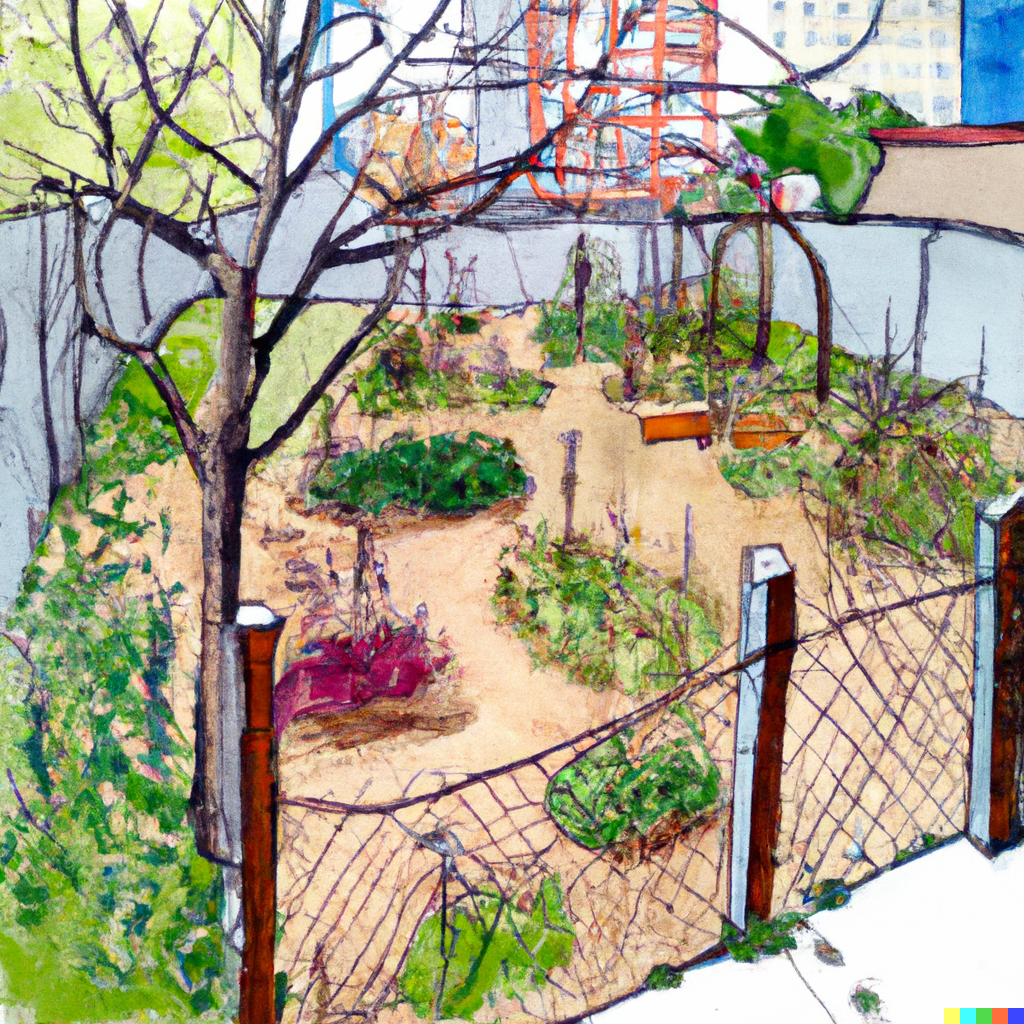
Beyond the environmental benefits, guerrilla gardening has a profound social impact. It fosters a sense of community ownership and pride in public spaces. These guerrilla gardens become gathering points, nurturing social interactions and strengthening community bonds. They offer opportunities for education, skill-sharing, and collective action, empowering individuals to take charge of their local environment. By transforming neglected areas into green havens, guerrilla gardening addresses issues of urban blight and helps reduce crime rates in previously derelict spaces. It also creates a sense of place and belonging, providing respite from the fast-paced urban life.
The social reasons for engaging in acts of unsanctioned sowing are a huge reason Yawn believes the movement to be so important.
“I would say that to me,” she explained, “the most interesting part of our activity is that I really want people to get out and walk, like downtown, right? So, take a downtown walk in our communities because that’s how we really get to know each other, by interacting with each other. And so for me, if our walking in our downtown or walking around in our neighborhoods, in our communities isn’t as enjoyable as walking in Greylock or outside up in the mountains or somewhere, then there’s a problem.
She added, “There’s just this real, like, lack of thought or a lack of effort for the walkability of our urban environments or our cities. And so if if that experience is a little bit more enjoyable, maybe we will get to know each other better and really like reach out and not be so scared of our neighbors. It just gives us an opportunity to kind of interact as as a community.”
Yawn said that, unfortunately, these transformations take a really long time. She suspects, she says, that the only way to actually get the ball rolling is through action. As for the subversive part?
“Sometimes you’ve just got to do it and then ask for forgiveness,” she laughed.
Covert Cultivation for Consumption

Without a doubt, people are nourishing their bodies as well as their spirits with guerrilla gardening, a grassroots movement that involves cultivating food, as well as flowers, in public spaces without permission. It typically takes place in urban areas where access to fresh, affordable produce is limited. Guerrilla gardeners covertly plant fruits, vegetables, and herbs in neglected or unused spaces such as abandoned lots, sidewalk cracks, or even traffic medians. The aim is to reclaim these areas and transform them into productive gardens that benefit the local community. Guerrilla gardening for nutrition promotes food security, community engagement, and environmental sustainability by increasing access to nutritious food and creating green spaces in urban jungles. Despite its unconventional methods, this movement has gained popularity as a creative and empowering way to address food.
Though Yawn says she anticipates this first foray into phantom gardening to be primarily a beautification sortee
“I think they’re both equally important, she said. “I definitely believe that growing our own food is the biggest form of activism we could have. I think that with the industrial food complex. we have no control of what’s being put into our food and where the seeds that are coming from. So if there’s anything that we can do that’s real activism, that’s to grow our own food. I live right downtown North Adams — I have no land whatsoever. And so I do the community gardening when I can because I love that whole organization. But to be honest, there’s so much wasted space here. We should have plots of land where people can go and grow gardens. I know there are a few people that do have vegetable gardens in property that they don’t own in town, and it’s really awesome to see them harvest their food.”
“I believe that if we have the opportunity to take care to grow things in our community,” continued Yawn, “then that makes us invested in our community. So if we have the ability to…being able to grow food is what creates civilization is. It’s agriculture and being able to till the land. Apparently, when we touch soil, we it produces a serotonin. So it’s like we’re meant to grow things. You know, it’s in our bodies’ psychologically. We actually become happier when we’re, you know, feeding ourselves by growing our own food, and just touching plants. So whether it’s food or beautification or for ecosystems or whatever, it’s important. And it’s such a better quality of life than just sitting around and complaining about things, you know? Fight food deserts and promote self-sufficiency.
Navigating Challenges
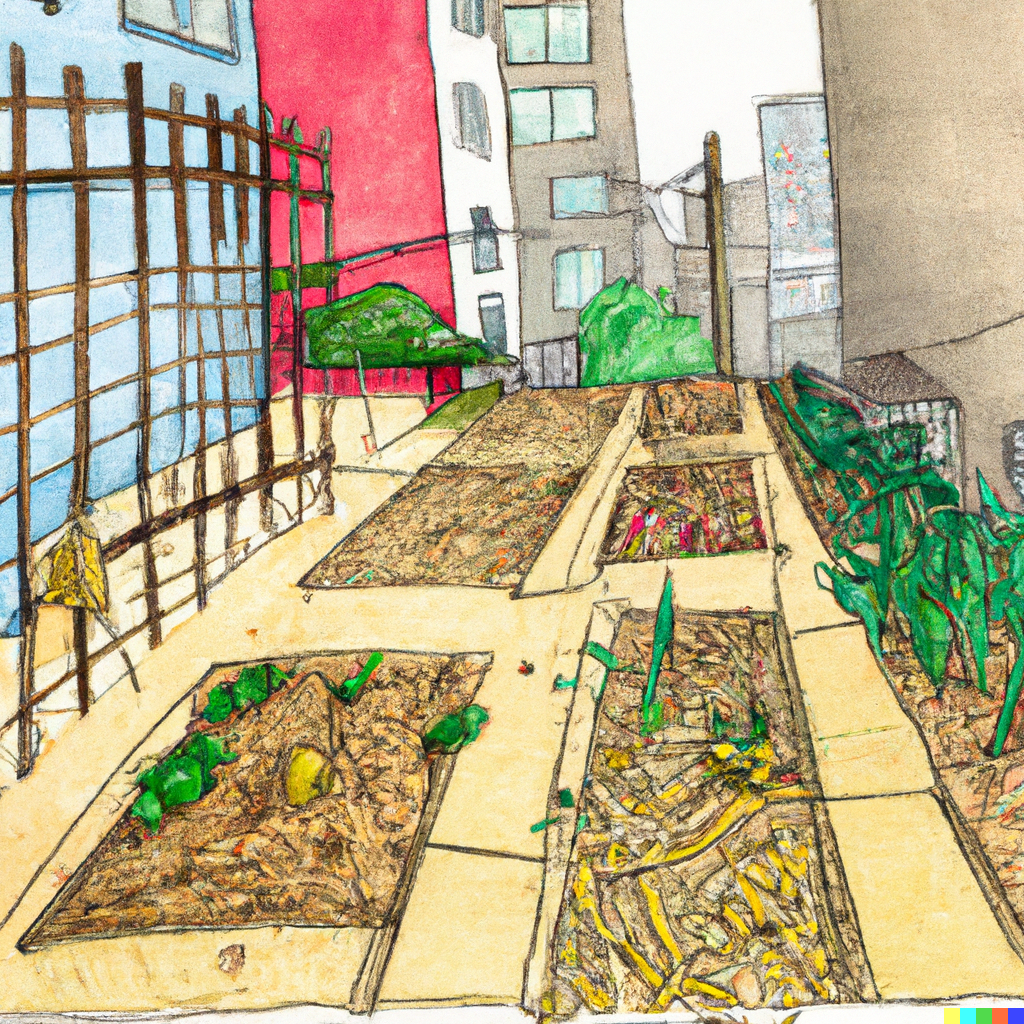
Yawn said that, unfortunately, these transformations take a really long time. She suspects, she says, that the only way to actually get the ball rolling is through action. As for the subversive part?
“Sometimes you’ve just got to do it and then ask for forgiveness,” she laughed.
Yawn suggested that the City has enough on its hands that it won’t likely be paying too much attention to some unauthorized sunflowers here or some kale there.
Guerrilla gardening faces various challenges, however, including legal constraints, lack of resources, and the maintenance of the gardens. Since these activities often involve unauthorized use of public or private property, some initiatives face legal repercussions. However, engaging with local authorities and seeking permission for temporary use can help alleviate this issue. Additionally, limited access to water, tools, and materials poses practical challenges, but creative solutions like rainwater harvesting and resource sharing within the community can overcome these obstacles. Ensuring the long-term survival of guerrilla gardens requires ongoing maintenance efforts by dedicated volunteers, emphasizing the importance of community involvement and collaboration.
Inspiration for the Future
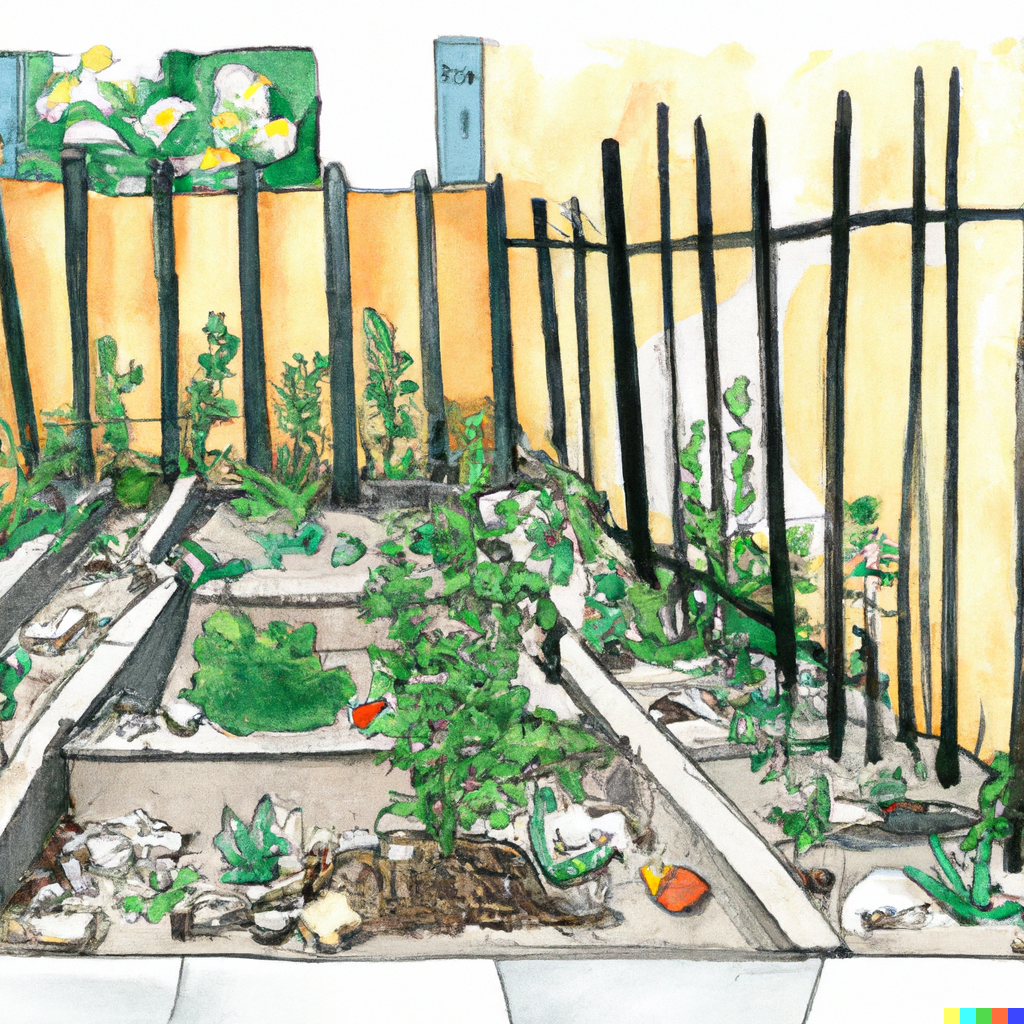
Guerrilla gardening serves as a powerful source of inspiration for urban planners, policymakers, and individuals looking to reimagine cities as sustainable and livable spaces. It highlights the potential for grassroots initiatives to transform neglected areas into thriving community hubs. Governments and local authorities can learn from the movement’s principles of citizen engagement and environmental stewardship to develop policies that support and encourage urban greening efforts. Moreover, individuals can join or initiate guerrilla gardening groups in their communities, contributing to the revitalization of their surroundings while fostering a deeper connection with nature.
Keeping in touch with our humanity
Yawn described the importance of staying in contact with the natural world even while plodding down a cement sidewalk. Some people aren’t able to access the forests and fields often, even though tree-covered hills are within eyesight almost anywhere in the Berkshires. Most of their time outdoors is spent navigating sidewalks and parking lots due to mobility issues. Children, also, have little say in how much time they spend in the great outdoors. Like so many adults, their day is spent rushing from one destination to the next, with little reason to revel in the journey.
“It’s kind of a crummy way to live, right? Like, everything’s just about consuming — it’s not about, like, the real joy of just being, you know? I think plants really do teach us to slow down a little bit and acknowledge — especially walking by a tended garden, you just see the love of the hand, of the human, mending the earth. There’s something so beautiful in that. With a vegetable garden, it’s like, “wow, it’s so cool to see people nurturing their bodies and taking care of themselves. I just think it’s a nice reminder that we are humans. We’re not machines. We need to appreciate that and just find what brings us joy.”


